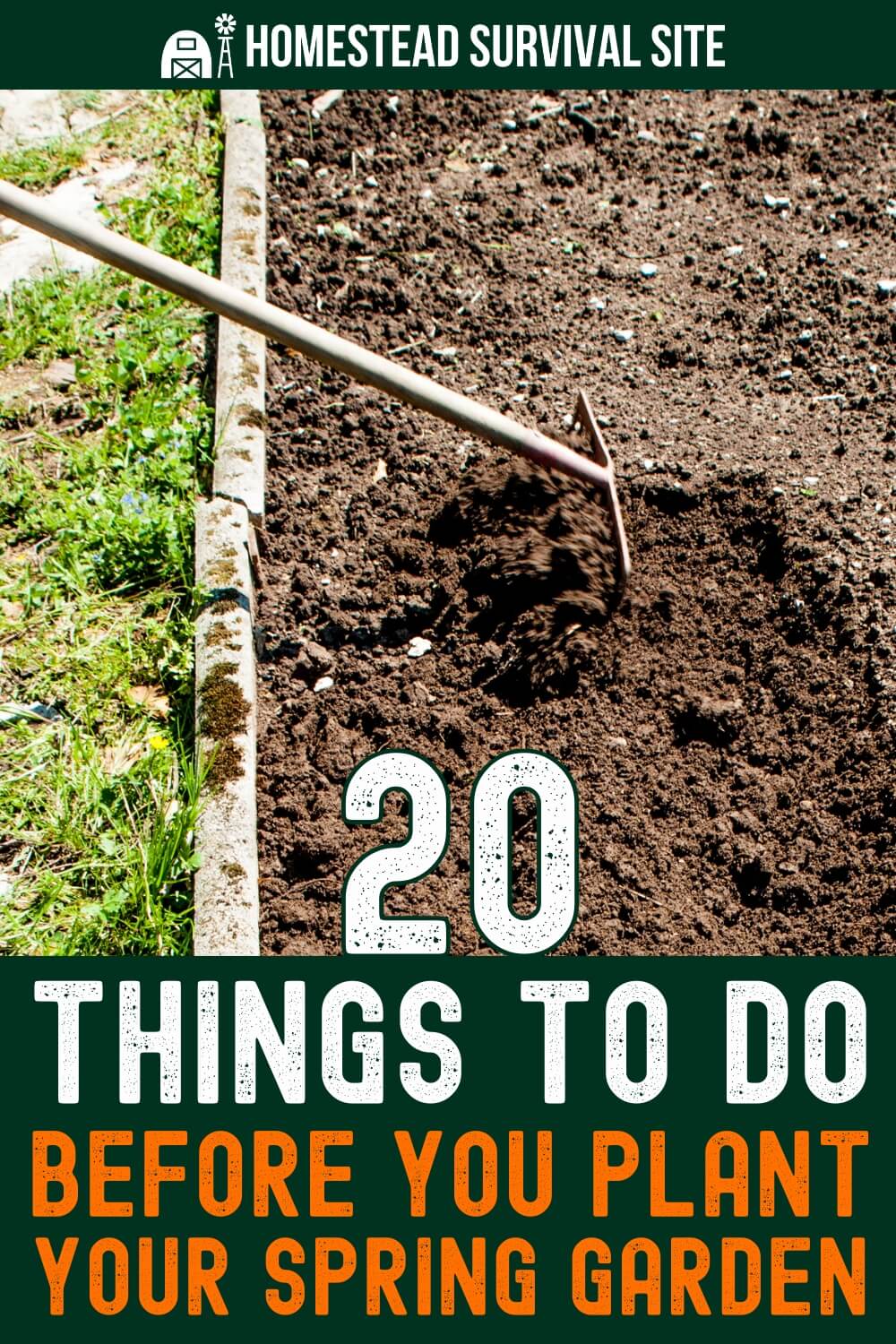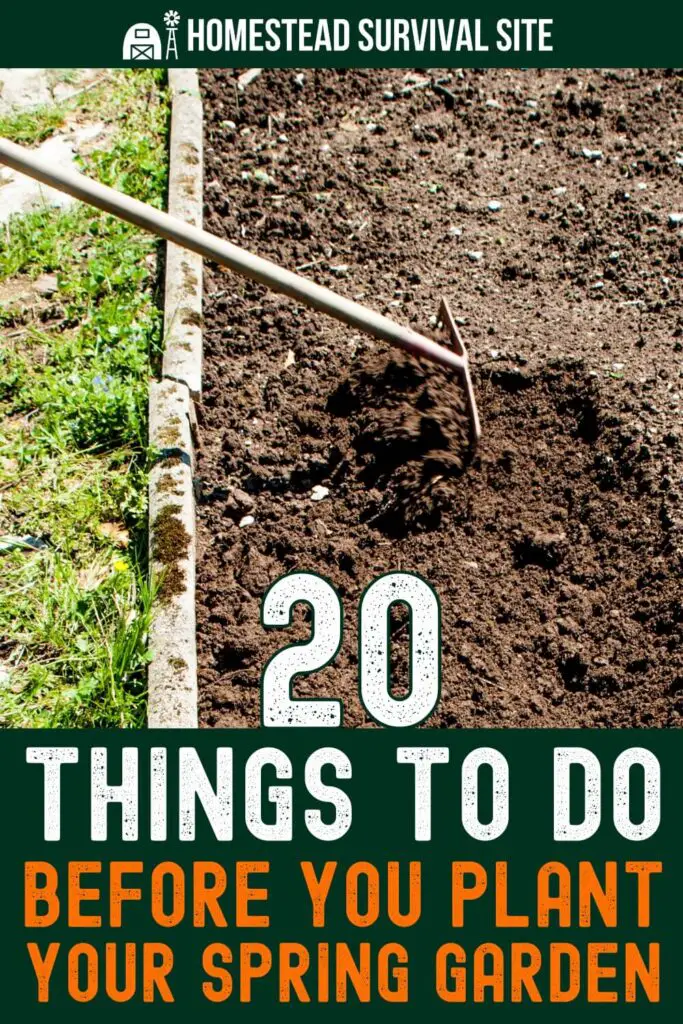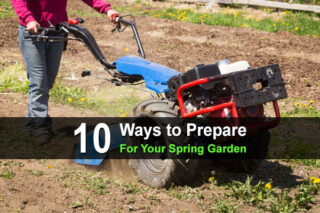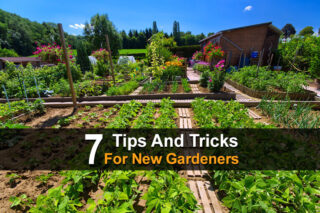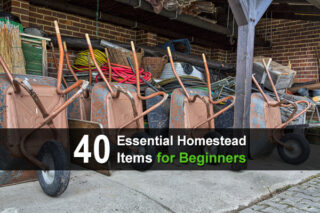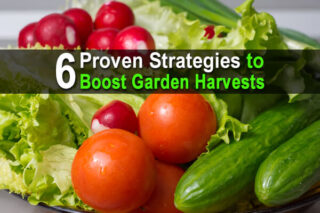Estimated reading time: 6 minutes
At this point in the winter, outdoor gardening can seem like a distant memory. However, there are many tasks you can and should start doing right now to gear up for a great spring garden.
Here’s our checklist of 20 things to do before you plant your spring garden.
Want to save this post for later? Click Here to Pin It On Pinterest!
1. Order Seeds
Check your favorite seed catalogs or garden stores for the seeds you need for your flowers and vegetables.
2. Start Some Seeds Indoors
Maximize your growing season by starting certain seeds indoors this winter. Use seed starting trays and plant lights to get your seeds going. Once they have germinated, you can place them near a south-facing window for the most amount of winter sunlight. Peppers and tomatoes are two garden staples that can benefit from this indoor head start.
3. Select Your Garden Site
Tour your property for garden locations that get lots of sun exposure. Most vegetables need at least six hours of direct sunlight each day. Keep in mind that trees that are bare now will leaf out and provide shade later this year.
Look for areas that offer good soil drainage and access to water, tools, and compost when choosing your garden site. If you will be using power for any of your tools, also think about your access to electricity.
4. Determine the Size of Your Garden and the Placement of Your Plants
Now’s the time to plan out your garden on paper. Draw a grid-like map of what goes where, paying attention to how much room each mature plant needs in order to maximize your yield without overcrowding your plants.
5. Check Your Supplies
Take an inventory of your gardening tools and supplies. Make sure they are clean, dry, sharpened and in good working order. Repair or replace any equipment that is in poor shape.
Caring for your tools not only helps saves money, it helps prevent the spread of disease in your garden. Think about what supplies you might want to add to your inventory to make your garden more fruitful or to make your work easier this year.
6. Create and Maintain a Compost Area
Your garden will benefit from the rich compost you can create from your grass clippings, vegetable waste, egg shells, coffee grounds, and woody pruning. To keep the pile aerated, turn it with a garden fork each month. Compost is easy to make and adds important nutrients to the soil and helps your soil hold moisture levels.
7. Read Up on Gardening
The winter is a good time to read books and articles by experts in order to learn more about gardening techniques. It’s always fun to get some new ideas to implement in your garden each year.
I highly recommend Mini Farming: Self-Sufficiency on 1/4 Acre. It's not all about gardening, but most of it is, and anyone who wants to start a homestead will find tons of great advice.
8. Research Watering Options
Look for ideas for a more efficient watering strategy. New soaker hoses or a drip watering system may save you time and money as well as conserve water. Also, think about any new ways you can capture rainwater.
9. Plan for Weed Control
There is no way to eliminate weeds entirely, but you can take steps to cut down on them. Straw, mulch, fabric, layers of newspaper, closer plant spacing and more targeted watering are some ideas. Check out these invasive plants and how to deal with them.
10. Get Rid of the Pest Welcome Mat
Remove places that attract pests such as large boards or stones where garden pests like to hide. Think about barriers you can install, including everything from adding new fencing to planting border plants, such as marigolds and nasturtiums, to keep pests at bay.
Search for and remove hibernating pests such as slugs, snails, and aphids, on your perennial plants. Be on alert for white vine weevil larvae, which can live in compost and feed on the roots of your plants.
11. Prune Fruit Trees
Late winter or early spring – before buds begin to open — is the best time to prune your fruit trees and deciduous shrubs. Cut out any dead, diseased or damaged branches.
12. Prepare Your Beds
Remove any remaining winter mulch or leaves and work fresh mulch or compost into the soil. Get rid of other debris that may have found its way into your beds.
13. Remove Any Winter Weeds
Take care of any interlopers that have sprung up since your fall clean-up.
14. Fix Fences, Gates, and Trellises
Winter can damage your wooden garden structures. When the worst of the weather has passed, take a tour of your property to see if any repairs or replacements need to be accomplished before growing season.
15. Clean Your Greenhouse
Sweep out debris on the floor and benches and disinfect the inside of the glass of your greenhouse. Wash out pots and seed trays. Ventilate your greenhouse when the weather permits and let everything dry out well.
16. Get a Soil Test
Take a sample to your local extension service office to find out if you need to add nutrients and/or adjust the pH level of your soil.
17. Build Raised Beds
Expand your growing space by constructing a few raised beds this year. You also can consider adding trellises and hanging baskets for more vertical gardening options.
18. Encourage Beneficial Insects
Take steps to attract helpful insects, such as bees, butterflies, and ladybugs, to your garden. These insects play a vital role in pollination and pest control. You can plant a variety of native flowering plants that bloom throughout the growing season to provide food and shelter.
You could also add some insect hotels or shallow water dishes to make your garden a welcoming habitat. Preparing for these allies now can make a big difference in the health and productivity of your garden later.
19. Start or Continue a Journal
A journal can be a gardener’s best friend. Keep your plans, drawings, and purchase receipts all in one place. Make notes of what grows well and not so well. Keep track of what to do when.
20. Enjoy the Outdoors
As the days slowly lengthen, embrace this time of planning and preparation for your spring garden. Growing your own food is a satisfying job for a homesteader, and each new growing season offers exciting challenges and rewards.
Like this post? Don't Forget to Pin It On Pinterest!
You May Also Like:

